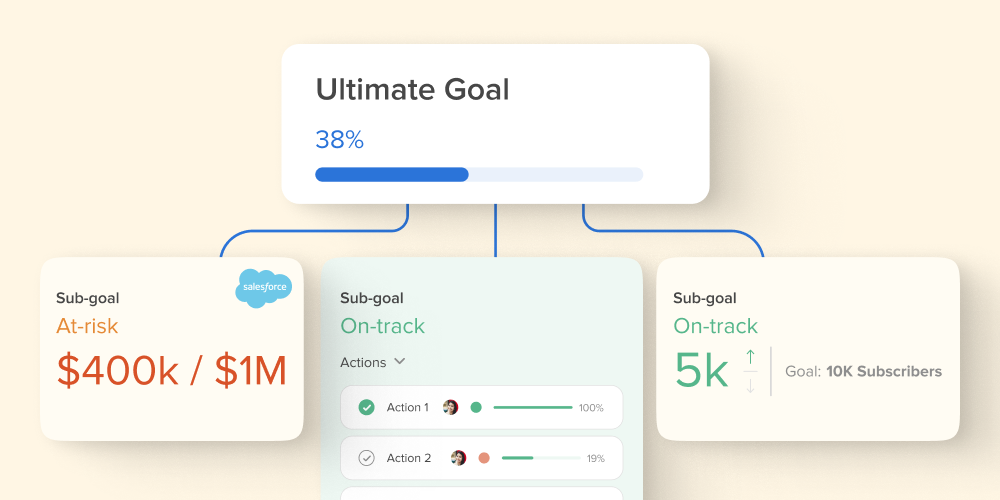If project success was like a running race, you don’t want to come in last. To ensure your project finishes well, you need to set up your project success criteria and prepare for the trials ahead. If you are anything like me, you will need to immediately know whether the project you just completed was successful.
You want to feel that sense of accomplishment in crossing that project finish line. But, to stand on the winner’s pedestal and hold up that first-place trophy, you need to create a plan and set up your project success criteria first.
Unfortunately, when it comes to the success of your project (and training for a race), there is no easy shortcut. Since success can be defined in many ways, your success criteria will determine whether you are standing on that pedestal with a first-place trophy or walking away with a participation ribbon. In this blog post, we’re going to discuss some essential project success criteria and how they can be used to improve your projects and get you that win!
Define your project success criteria
In project management, we like to use the SMART goal framework when defining project objectives. SMART, or specific, measurable, achievable, relevant, and time-bound goals are steps you need to add to your project. An example of using SMART to define your project success criteria goes something like this:
Let’s say you want to increase web traffic to your site. A SMART goal could be:
“I want to increase web traffic from the United States by 25% in the next three months.” This project success criterion is specific (you’re targeting a location), measurable (you have defined an amount and time frame), achievable (a 25% increase is ambitious but possible), relevant (this will help your business grow), and timebound (three months gives you a timeline to work with).
Here is another example of SMART, and time it’s for a project that’s more people-focused:
“Our team will complete a customer training program to improve our customer satisfaction score by five points within six months.”
In this project success criterion, you focus on training your team to improve a customer service metric. This goal is also specific, measurable, achievable (with hard work!), relevant (providing exceptional customer service will lead to happier customers), and timebound.
Your project success criteria don’t have to be set in stone – you can constantly adjust them as your project progresses. But it’s essential to at least start with some basics so that you have a foundation to build from. Without defining your project goals, it’ll be challenging to track progress and assess whether or not you’ve been successful.
Track progress and revise as needed
Once you have defined your project success criteria, track progress along the way. If this were a race – this would be the time when you would compare how you are feeling now (weeks into the training plan) compared to day 1. Knowing where you were compared to where you are will help meet your future goals.
If you are falling behind, you can always revise your project plan and success criteria as needed. If necessary, adopt the critical path method to achieve your goals.
Also, don’t forget to celebrate project milestones along the way! Celebrating small wins will help keep everyone motivated and focused on the end goal. Again, with the race metaphor here – as there is nothing better than hitting a new personal record when training for a race – celebrate the little things and prepare for the big ones!
Make sure your criteria are attainable
When developing project success criteria, make sure that they are achievable. This may seem like common sense, but you would be surprised how often people set themselves up for failure by setting unrealistic goals. For example, I once told myself I could write, develop and deliver a website for a client in one month. While I did accomplish the task, it was stressful, expensive, and nothing I ever want to do again.
It is important to remember that your project success criteria should be achievable, realistic, and relevant to your project objectives. There was no point for me to set a goal to create a website in 1 month when the client would have been perfectly okay with me if I had taken three months. Not only was my goal unrealistic, but it led to internal disappointment and frustration among my team members.
Get buy-in from stakeholders
Once you have developed your project success criteria, you need to obtain buy-in from your project stakeholders. These stakeholders include anyone who has a vested interest in the project and its success or failure. Buy-in is important because it ensures that everyone is on the same page and working towards the same goal.
Three ways to get buy-in from your stakeholders
The first way is to ensure that they are involved in the project from the beginning. This means involving them in project planning and setting up regular communication channels so that they can provide input along the way.
Another way to get buy-in is by sharing your project success criteria with them early on and getting their feedback. This helps them feel invested in the project and allows you to make sure that your standards are realistic and relevant to their needs.
The last way to get buy-in is by keeping them updated on project progress and milestones. Keeping them updated helps ensure that they are aware of the project’s status and can provide input if needed. To ensure that they are updated with the most recent milestones and tasks, invest in a project management platform like Hive. Hive’s unique platform will keep them updated with project progress and allow them to provide feedback in real-time.
The importance of project success criteria
If you are joining me in the race that is creating project success criteria, it’s time we get training. As you can see, project success criteria are vital to keeping your project moving and heading toward the finish line. Creating criteria will help you set realistic project goals, track progress, and get buy-in from stakeholders throughout the project review process. By developing robust project success criteria, you can increase your chances of project success and hold up that first place trophy.
Using Hive to track your goals and guarantee project success

Hive Goals is a tool within the Hive project management platform that lets you set goals, visualize progress, and keep everyone aligned in one centralized dashboard. Once you define the success criteria for your project, simply decide how you’d like your goals to be measured.
You can track your progress based on:
- Completed actions
- Status of subgoals
- Numerical values
Keep in mind, when choosing your method for tracking project progress if they are aligned with your success criteria. For example, if your goal is to increase by 10% the number of articles published on your website monthly, you might want to focus on “completed actions” meaning how many articles were effectively published each month. Now, if your goal is to increase your revenue by 15% by the end of the second quarter of the year, you might want to keep your eye on the numerical values on your dashboard.
With Hive Goals, you can set up realistic goals by department, team and even by individual. When correlating goals with subgoals everyone in the company can see how their daily efforts are contributing to the company’s overall goal — which is a great boost of motivation for any individual. For an overview of your project’s success performance, you can automate goal tracking across multiple tools and be updated with real-time information from all of the apps used across your business.
With Hive Goals you can:
- Create one, ten, twenty, or more goals for your team, so everyone understands what they’re contributing to.
- Centralize and automate your goal tracking and reporting.
- Pull data from other systems into Hive to streamline operations and reporting.
- Share your goal or goals, assign the goal to relevant teammates, track activity, and give yourselves a deadline.
- Understand how your team and organization are pacing towards an individual goal or a set of goals.
- Color-coded designations allow an easy understanding of “on-track” items.
- When it’s time to review progress, accomplishments, and achievements, easily export all relevant information.
There’s much more you can accomplish for your business success using Hive Goals. Want to get started? Start your free trial of Hive Goals today!






